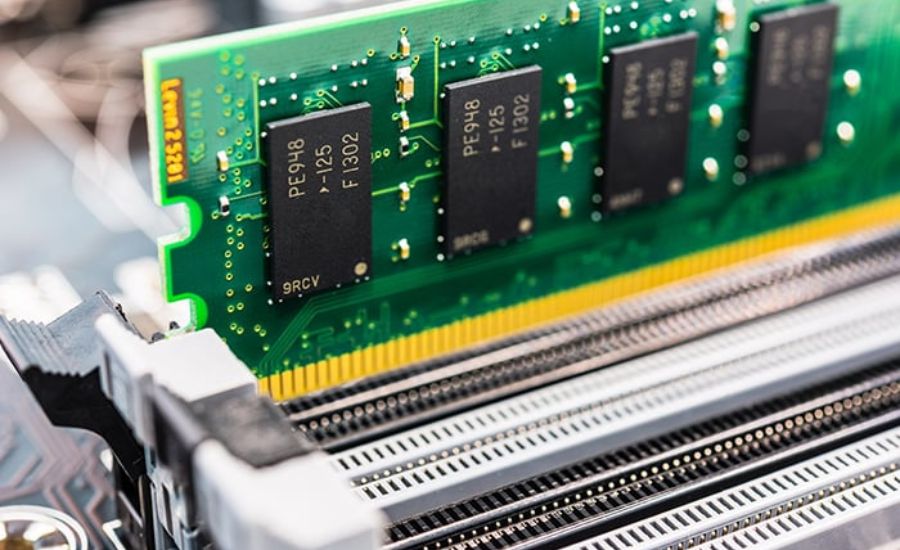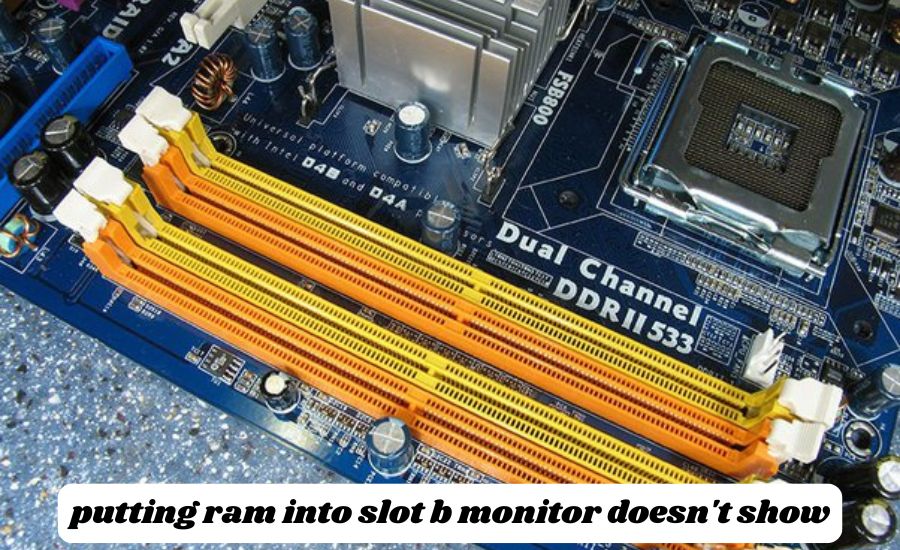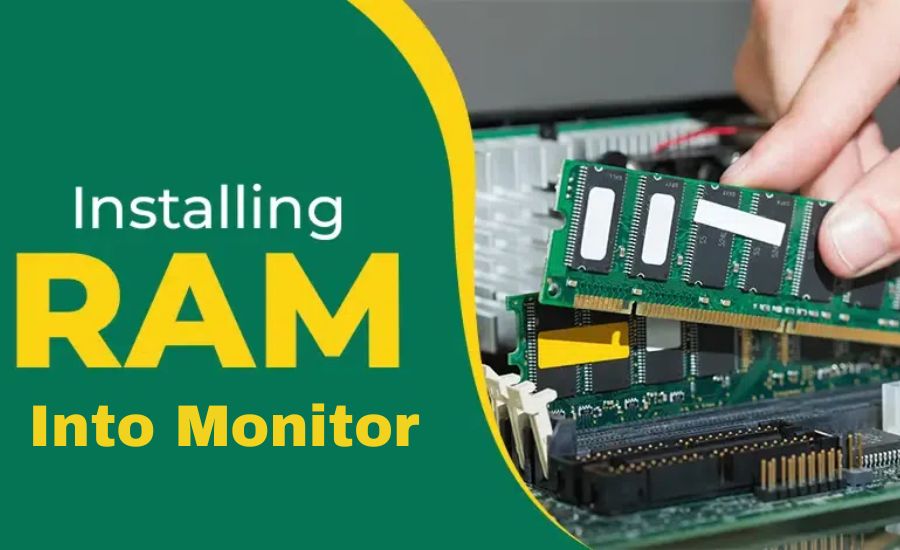Are you facing issues where putting ram into slot b monitor doesn’t show any display? This can be frustrating, but don’t worry! Many people face this problem, and there are solutions to fix it. At ventsblogs.com, we’re here to help you understand why this happens and what you can do to get your computer working again.
When putting RAM into slot B, the monitor doesn’t show anything because there might be issues with the RAM, the slot, or the motherboard. This blog post will explore different ways to troubleshoot and solve this problem so your computer works smoothly again.
Why Putting RAM into Slot B Monitor Doesn’t Show: Common Causes
When putting ram into slot b monitor doesn’t show, the monitor doesn’t display any, which can happen for many reasons. Sometimes, the RAM stick might need to be seated properly in the slot. If the RAM is not fully inserted, the computer won’t be able to detect it, which causes the display problem.
Another reason could be that slot B on the motherboard is faulty. If the slot is damaged, it won’t recognize the RAM, which could prevent your monitor from showing anything. Checking if slot A works fine might give you a hint about whether the problem is related to the slot itself.
Lastly, there could be an issue with the RAM stick itself. If the RAM is damaged or incompatible with your motherboard, putting it into slot B might not work. Testing the RAM in a different slot or computer can help you see if it’s the source of the issue.
How to Fix the “Putting RAM into Slot B Monitor Doesn’t Show” Issue
The first step in fixing the issue when putting ram into slot b monitor doesn’t show is to check if the RAM is properly seated. Please turn off your computer, unplug it, and carefully remove and reinsert the RAM stick, making sure it clicks into place.
Next, you should check the RAM slot itself. If other slots, like slot A, work fine, but slot B causes display problems, the slot could be faulty. Clean the slot using compressed air to remove dust or debris affecting the connection.
If these steps don’t help, consider testing the RAM on another computer. If the RAM works in a different machine, it’s likely an issue with your motherboard. However, if the putting ram into slot b monitor doesn’t show and fails to work elsewhere, it might need to be replaced.
Troubleshooting Steps When Putting RAM into Slot B Monitor Doesn’t Show
When putting ram into slot b monitor doesn’t show and the monitor doesn’t show, one of the first things to do is try switching the RAM sticks between slots. If slot A works and slot B doesn’t, this can point to a specific issue with slot B on the motherboard.
You can also try resetting your computer’s BIOS. Sometimes, the system might need to recognize new hardware, like RAM, when installed properly. Resetting the BIOS often helps fix these detection issues, allowing the monitor to display correctly.

Lastly, make sure your motherboard supports the type and speed of the RAM you’re using. If the RAM is incompatible, putting it into slot B may cause the monitor to remain blank. Checking your motherboard’s manual can help confirm compatibility.
What happens when putting RAM into Slot B Monitor? Doesn’t it display anything?
If putting ram into slot b monitor doesn’t show does not display anything on the monitor, it could mean your computer is having trouble recognizing the memory. This happens when the RAM isn’t making proper contact with the slot, which means your computer can’t use it.
A common scenario is that the motherboard only works properly with certain configurations of RAM sticks. For example, some motherboards may need RAM installed in specific pairs of slots for dual-channel memory to work, meaning putting it into slot B alone might cause the issue.
Another possible cause is a power supply issue. If your computer isn’t receiving enough power to handle the additional RAM, the monitor might not display anything. Ensuring that your power supply is adequate for your system is an important step to consider.
How to Check RAM Compatibility for Slot B When the Monitor Doesn’t Show
When putting ram into slot b monitor doesn’t show, it is important to check the compatibility of your RAM with your motherboard, and the monitor doesn’t show anything. Not all motherboards support every type of RAM, and using incompatible memory could lead to display issues.
You can start by looking at your motherboard’s specifications. The user manual will often list which types of RAM are supported and how they should be installed. If your RAM type or speed isn’t compatible, the monitor may not display when inserted into slot B.
If your RAM is compatible, the problem might be with the slot or the RAM stick itself. You can use the same RAM stick in slot A or another system to check if it works. This can help determine whether the RAM or the slot is the issue.
Fixing Display Problems After Putting RAM into Slot B on Your PC
If you’re facing display problems after putting ram into slot b monitor doesn’t show on your PC, the first thing to try is reseating the RAM. Power down your system, unplug it and carefully remove the RAM. Then, place it back into slot B, ensuring it’s fully inserted.
Another important step is to update your BIOS. Sometimes, the BIOS might only recognize the new RAM properly if it is updated. Updating it can often fix issues where the monitor doesn’t display after adding RAM to slot B.

Lastly, the RAM should be swapped between slots to see if the problem is specific to slot B. If slot A works fine but slot B doesn’t, this could indicate an issue with the motherboard. Testing in different configurations will help you pinpoint the problem.
Is Your Motherboard the Problem? Putting RAM into Slot B Monitor Doesn’t Show
When putting ram into slot b monitor doesn’t show and the monitor doesn’t show, the issue could be related to your motherboard. A faulty or dirty slot can prevent the RAM from connecting properly, leading to display problems.
Cleaning the slot using compressed air might help remove any dust or dirt causing the problem. If the slot is damaged, it might need professional repair or replacement. Checking if other slots work can help identify if the issue is specific to slot B.
Sometimes, the problem can also be due to outdated motherboard firmware. Updating your motherboard’s BIOS can help fix compatibility or recognition issues, allowing your system to display RAM properly when in slot B.
Solutions for Putting RAM into Slot B and Monitor Not Working
If you putting ram into slot b monitor doesn’t show and the monitor isn’t working, there are several solutions you can try. First, make sure the RAM stick is correctly seated. A loose connection can often prevent the monitor from displaying anything.
If the problem persists, try resetting the motherboard’s BIOS. This can resolve configuration issues that prevent the RAM from being recognized when installed in slot B. The BIOS reset process varies by motherboard, so check your user manual for instructions.
Lastly, if nothing else works, slot B may be faulty. If the RAM works in slot A or another system, then the issue is likely with slot B, and you might need to repair or replace the motherboard to fix it.
What to Do If Putting RAM into Slot B Monitor Doesn’t Respond
If you find that putting ram into slot b monitor doesn’t show and the monitor doesn’t respond, the first step is to double-check that the RAM stick is fully inserted. A partially seated RAM stick can cause the monitor to remain blank even though the computer appears to turn on.
Another option is to test the RAM stick in other slots. If the monitor displays when you putting ram into slot b monitor doesn’t show, then slot B might be damaged or faulty. You can also try using different RAM sticks to rule out whether the issue is with the RAM itself.
Finally, you can test the power supply to ensure it’s delivering enough power for the additional RAM. A weak power supply might cause display issues when adding more memory, especially if your system is older.
You Should Know: Cert Master HTTP Status 401
Easy Fixes for Putting RAM into Slot B When the Monitor Doesn’t Turn On

When putting ram into slot b monitor doesn’t show and the monitor doesn’t turn on, there are some easy fixes you can try. First, make sure the RAM stick is completely seated in the slot. Even a small misalignment can cause the display not to show.
Another simple fix is to switch the RAM stick between different slots. If the monitor shows a display when your putting ram into slot b monitor doesn’t show, this can indicate an issue with slot B itself. Try cleaning the slot to improve the connection.
If these fixes don’t help, consider resetting the motherboard’s BIOS. This can often resolve issues where the monitor fails to display after adding new RAM. Make sure to follow your motherboard’s instructions carefully when resetting the BIOS.
Does Putting RAM into Slot B Cause Monitor Display Issues? Here’s Why!
When putting ram into slot b monitor doesn’t show causes monitor display issues, it’s often due to the RAM not being properly seated or recognized by the motherboard. If the RAM isn’t securely in place, the system won’t detect it, which results in a blank screen.
Another cause could be a compatibility issue between the RAM and the motherboard. Checking the RAM specifications in your motherboard’s manual can help you see if it’s the right type for your system. Incompatible RAM can cause display problems when installed in any slot, including slot B.
Power supply issues also play a role. If your computer isn’t receiving enough power to handle the RAM, the monitor may not show anything. Upgrading your power supply can sometimes solve this issue, especially if you’ve added more hardware to your system.
Putting RAM into Slot B: Why Your Monitor Doesn’t Show and How to Fix It
When putting ram into slot b monitor doesn’t show and the monitor doesn’t show, one of the best ways to fix it is by ensuring the RAM is seated correctly. Carefully remove and reinsert the RAM stick, ensuring it securely clicks into place.
Another method is to test the RAM in other slots. Suppose the RAM works in slot A but not in slot B. In that case, the issue might be with slot B. Cleaning the slot or resetting the motherboard’s BIOS could help restore functionality and allow the monitor to display correctly.
If these methods don’t work, testing the RAM in another computer can help determine if the RAM is faulty. If the RAM works elsewhere, the problem is likely with your motherboard or power supply, which may need to be checked for issues.
Conclusion
It can be frustrating when you putting ram into slot b monitor doesn’t show. But the good news is that there are simple things you can check to fix the problem. Ensure the RAM is properly seated, check if the slot is clean, and see if your RAM and motherboard are compatible.
If the issue continues, it could be a faulty slot or RAM. Testing the RAM in another slot or computer can help you figure out where the problem is. You can solve the issue with patience and simple steps and get your monitor working again!
Must Read: Qefmzxuefae
FAQs
Q: Why does my monitor not show when I put RAM into slot B?
A: This could happen if the RAM isn’t seated properly, the slot is faulty, or the RAM stick is incompatible with your motherboard.
Q: How do I know if my RAM is properly seated?
A: Ensure the RAM clicks firmly and the side clips snap into position. You should feel it lock securely.
Q: Can a faulty RAM slot cause display issues?
A: A faulty RAM slot can prevent your computer from booting up properly, leading to display problems.
Q: Should I switch the RAM to another slot?
A: Yes, moving the RAM to another slot can help you determine if the issue is with the RAM stick or the slot itself.
Q: Is my motherboard damaged if the monitor doesn’t show when RAM is inserted?
A: It’s possible, but first try troubleshooting the RAM and slot. If the issue persists, the motherboard may need inspection.
Q: Can using incompatible RAM cause display issues?
A: Yes, using RAM that isn’t compatible with your motherboard can cause booting and display problems.
Q: What should I do if none of the RAM slots work?
A: If none of the slots work, test the RAM in another computer or try new RAM sticks to see if the issue is with the motherboard or the RAM.
